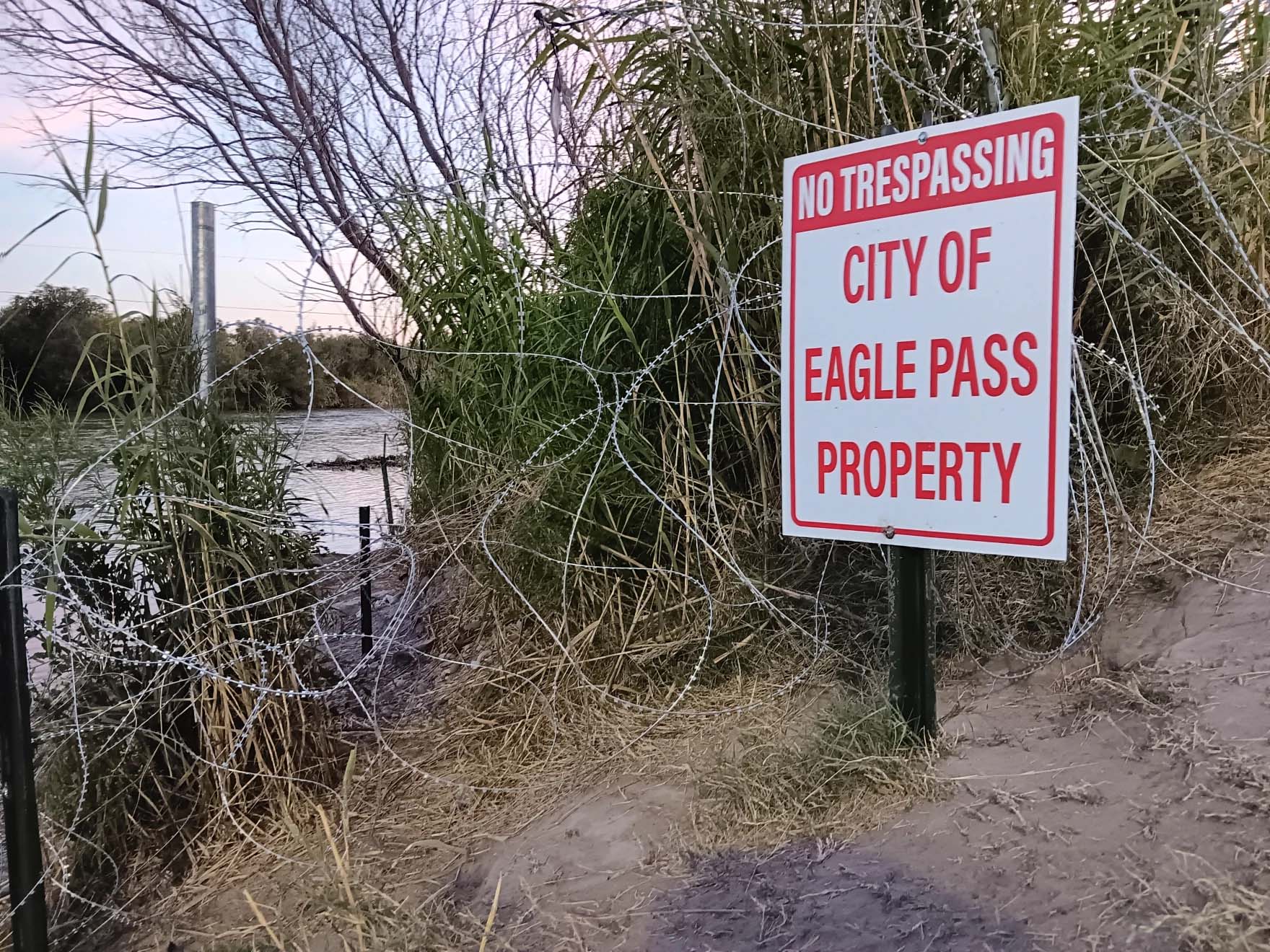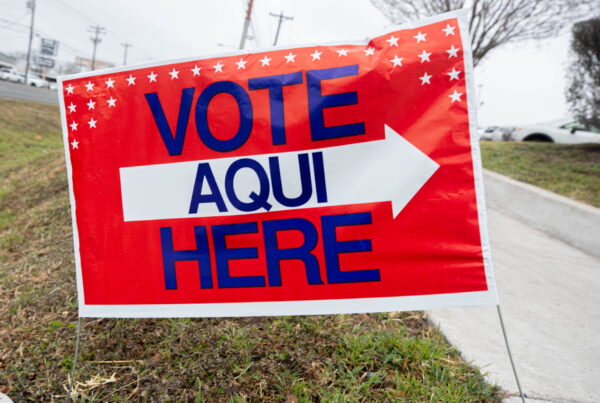The U.S. Supreme Court dealt a major legal blow to Gov. Greg Abbott’s Operation Lone Star this week, giving the green light to federal agents to cut or remove razor wire placed along the border with Mexico.
It’s the latest as a bitter dispute over border security between Abbott and the Biden administration continues to intensify. Texas National Guard members have occupied a public park in Eagle Pass adjacent to the Rio Grande and have also deployed a buoy barrier in the water.
Stephen Vladeck, the Charles Alan Wright Chair in Federal Courts at the University of Texas School of Law, joined Texas Standard with more about what’s happening at the border.
This transcript has been edited lightly for clarity:
Texas Standard: The Biden administration sought this ruling, which was a blow to Gov. Greg Abbott’s efforts – how much of a blow to those efforts?
Stephen Vladeck: So I think in the short term, a fairly modest one. I mean, all that the Supreme Court’s ruling on Monday does is it clears the way for federal officials to cut or otherwise remove the concertina wire that Texas officials have put at various places at or near about a 28-mile stretch of the border near Eagle Pass.
I think the larger point is that it also signals at least five votes on the current Supreme Court that’s more likely to side with the federal government across the range of the current disputes between Texas and federal authorities over immigration. And so it’s probably more significant for what it signals in the longer term than for the immediate effects it will have on operations in Texas.
You mentioned five votes, a 5-4 decision without explanation. Do we know anything about why the court didn’t go along with Texas’ position in this case?
No. As has, I think unfortunately, become so much more commonplace in the last six or seven years, the court tends not to provide explanations when it issues this kind of emergency relief – when it intervenes at an early stage of a case, as the Biden administration had asked it to here.
It’s also a bit unusual that there weren’t even any explanations or opinions filed by the dissenters. And so we really are left to read the tea leaves in a case in which you could construct a couple of different arguments about why different justices might have been more or less supportive of the competing sides.
» GET MORE NEWS FROM AROUND THE STATE: Sign up for Texas Standard’s weekly newsletters
So I guess we may just have to have another case to see if these five votes go the same way. Is that where we think the implications here could be for future challenges to the governor’s larger border strategy?
You know, there are already two other pending lawsuits between the federal government and Texas over the governor’s actions at/near the border. There’s a lawsuit over Governor Abbott’s placing of these movable barriers in the Rio Grande. There’s the federal government’s lawsuit trying to block SB 4 from going into effect.
So, you know, one way or the other, this legal fight about just how far Texas can go – not just to supplement federal immigration enforcement, but really to supplant it – is going to have to be resolved by the Supreme Court eventually.
I think the problem in the short term is that until and unless the Supreme Court resolves it, Governor Abbott, I think, is going to feel emboldened to keep pushing the envelope to the point where we’re looking at the kinds of potential physical confrontation between federal and state officials, the likes of which we have not seen since the desegregation cases of the 1950s and 1960s.
Well, that leads me exactly to my next question with this current case. The Supreme Court just ruled on this. But in a statement, Texas Attorney General Ken Paxton vowed to continue to fight. But where could Texas legally turn?
Monday’s ruling by the Supreme Court doesn’t end this case. It just means that while the case goes forward, the injunction that the federal appeals court had entered that blocked federal officials from removing the concertina wire is going to be on hold.
The Fifth Circuit is still going to hear oral arguments on February 7th. They’re still going to presumably issue a decision at some point later this spring. And one way or the other, it’s a good bet that that case will end up back in the Supreme Court sometime in the fall.
And I guess even even now, there are some lawmakers on the far right who’ve said Governor Abbott should not comply with these orders. I mean, there’s what the law says, and then there’s what’s still happening on the ground. So could Governor Abbott resist? And if that happened, then what?
It should be called out for what it is: that there are Republican politicians calling upon Governor Abbott to try to defy this Supreme Court. I mean, that’s pretty stark and jarring.
It also, I think, testifies to how little those politicians understand what this case is actually about, because the actual ruling the Supreme Court handed down on Monday doesn’t require Governor Abbott to do anything. What it does is it clears away the possible legal consequences if the federal government continues to cut or otherwise remove the concertina wire that Texas has placed along the border.
What it really speaks to is just how much political grandstanding is surrounding the very serious legal questions implicated by this dispute.














